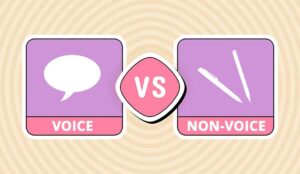Voice design is both an art and a science. It’s more than just writing a script to take the user from point A to point B and collect some information along the way.
The designer needs to bridge the gap between technical functionality – the needs of the machine – while also accounting for the sometimes unpredictable behaviour of the human users – the needs of the humans.
Every interaction is the sum of its parts, and must be taken in totality when creating a successful voice-centred design. The mapped user journey needs to be functional, feel natural, and accomplish its designed task.
Besides being a good writer, a voice designer needs always to be an advocate for the end-user and must also be aware of the limitations of human-to-machine voice interactions.
For example, when two people are speaking on the phone, there are verbal cues to indicate when it is time for the other person to speak; a long pause, a subtle “um-hum” to indicate that someone is still listening, or even something very overt like “what do you think?”
The absence of such cues in human-to-machine conversations can cause turn-taking problems which can quickly derail an interaction and cause it to fail.
This is just one example of the many considerations a designer needs to take into account when creating a voice-centred interaction.
Contributed by: Talkdesk
Author: Robyn Coppell
Reviewed by: Rachael Trickey
Published On: 8th Sep 2022 - Last modified: 25th Sep 2025
Read more about - Definitions, Talkdesk, Terminology









































